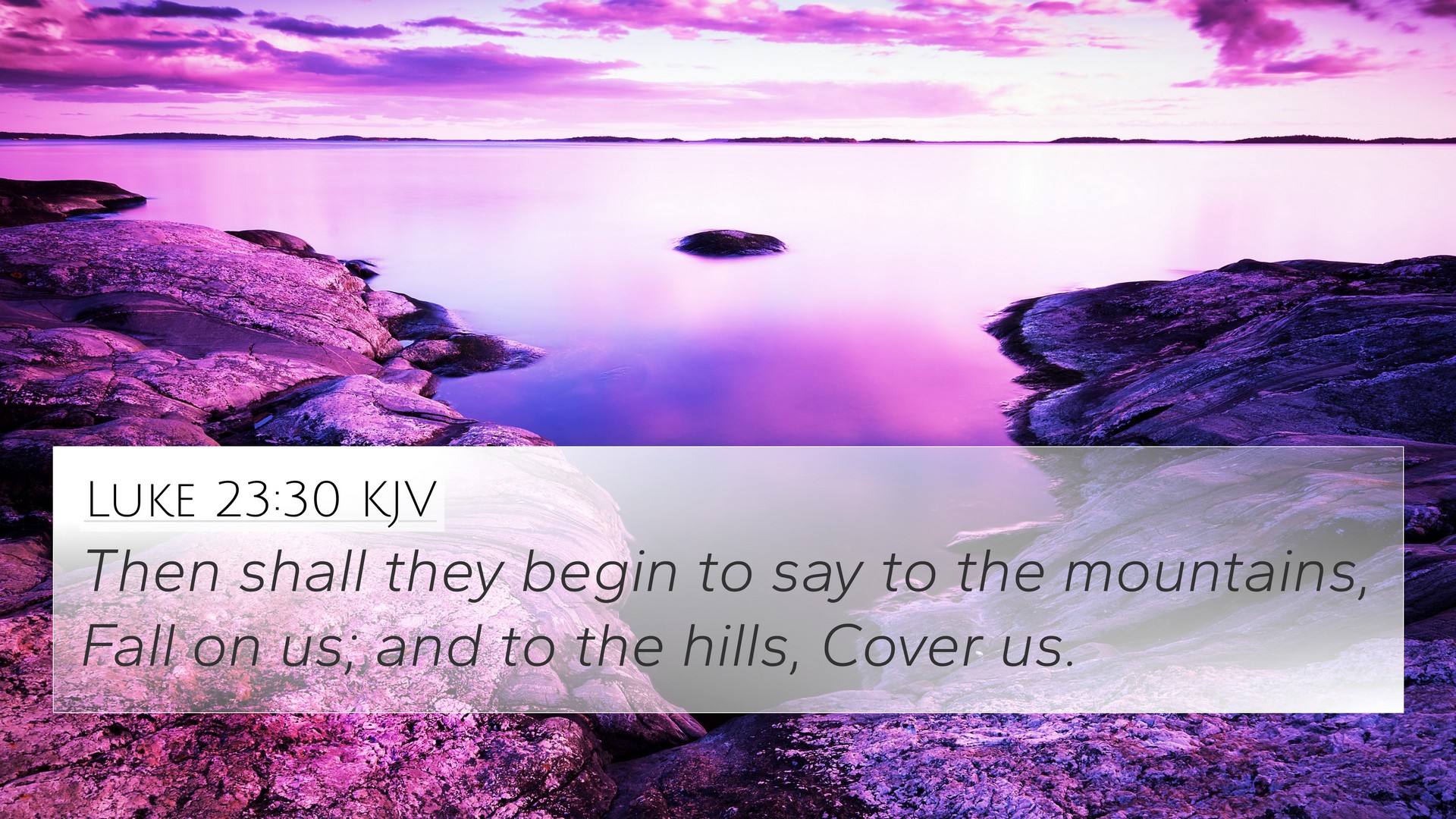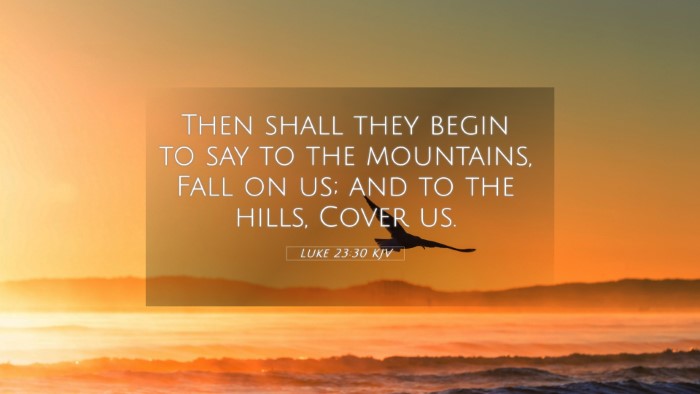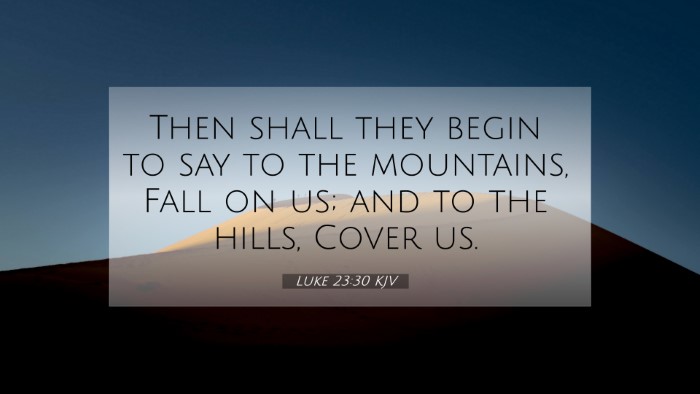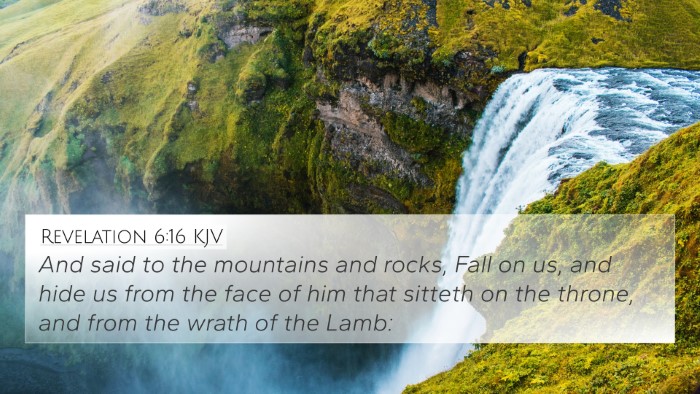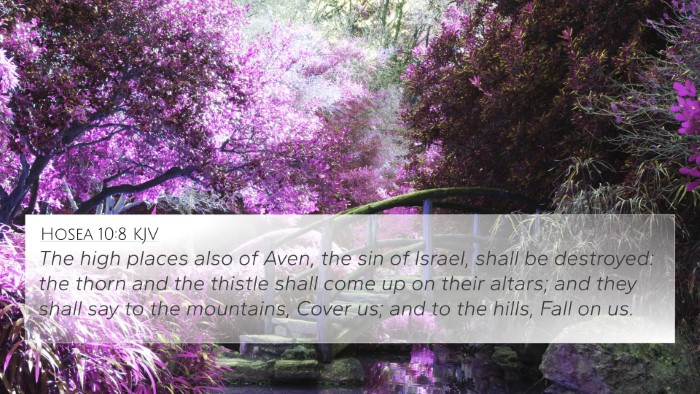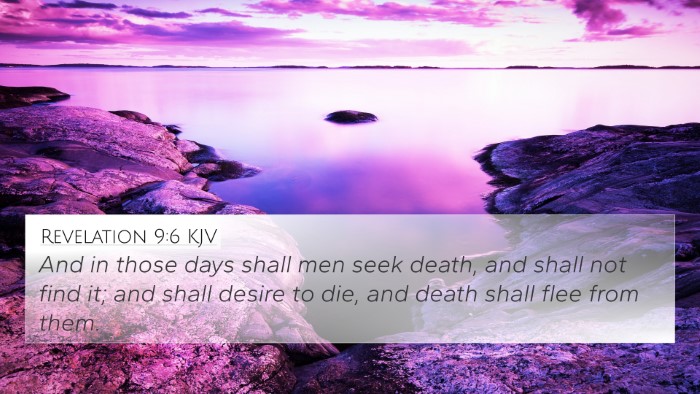Understanding Luke 23:30
Luke 23:30 states, "Then shall they begin to say to the mountains, Fall on us; and to the hills, Cover us." This verse is spoken in the context of Jesus’ crucifixion, reflecting profound themes of judgment, despair, and the overwhelming nature of sin.
Commentary Insights
This verse is rich with implications, drawing on themes from various public domain commentaries.
Matthew Henry's Commentary
Matthew Henry highlights the deep sorrow and despair that surrounds the crucifixion of Christ. He notes that this verse emphasizes the sense of hopelessness that the people will feel as they witness such a tragic event. The mountains and hills are anthropomorphized signs of judgment, indicating a plea for escape from the horrific reality of sin's consequences.
Albert Barnes' Notes
Albert Barnes draws attention to the evocation of the Old Testament, particularly Hosea 10:8, where similar imagery is used to express the depth of anguish during times of divine judgment. Barnes sees the call for the mountains to fall as a metaphorical representation of the extreme remorse caused by the acknowledgment of their sins. It serves as a reflection not only on the physical suffering of Jesus but also the spiritual implications of turning away from God’s grace.
Adam Clarke's Commentary
Adam Clarke provides a comprehensive exploration of the societal implications of the statement. He discusses the collective guilt felt by the people of Jerusalem, who, aware of their wrongdoing, desire to escape the impending divine retribution. Clarke emphasizes the seriousness of the situation, suggesting that it encapsulates the fearful state of humanity when faced with ultimate judgment.
Thematic Bible Verse Connections
Luke 23:30 connects with several other scriptures that reflect similar themes of judgment, despair, and divine justice. Here are some key cross-references:
- Hosea 10:8: "The high places of Aven, the sin of Israel, shall be destroyed; the thorn and the thistle shall come up on their altars; and they shall say to the mountains, Cover us; and to the hills, Fall on us."
- Revelation 6:16: "And said to the mountains and rocks, Fall on us, and hide us from the face of Him that sits on the throne, and from the wrath of the Lamb."
- Jeremiah 4:23-26: A depiction of the desolation and destruction akin to the imagery presented in Luke.
- Matthew 24:30: "And then shall appear the sign of the Son of man in heaven: and then shall all the tribes of the earth mourn, and they shall see the Son of man coming in the clouds of heaven with power and great glory."
- Luke 21:26: "Men’s hearts failing them for fear, and for looking after those things which are coming on the earth: for the powers of heaven shall be shaken."
- Isaiah 2:19: "And they shall go into the holes of the rocks, and into the caves of the earth, for fear of the Lord, and for the glory of His majesty, when He arises to shake terribly the earth."
- Zephaniah 1:14-18: Prophecies regarding the day of the Lord, stoking fear and urging repentance.
Inter-Biblical Dialogue
Luke 23:30 initiates a powerful dialogue between the Old and New Testament scriptures, highlighting how themes of lamentation and judgment are interwoven. This highlights the unity of the Biblical narrative and the prophetic fulfillment seen in Christ’s sacrifice.
Cross-Referencing Bible Study Methods
When examining such themes, various tools can aid in cross-referencing Biblical texts. Utilizing a Bible concordance or a Bible cross-reference guide can facilitate a deeper understanding of interrelated scriptures.
Conclusion
In summary, Luke 23:30 poignantly encapsulates the despair faced by those witnessing Christ's crucifixion. Through careful comparative Bible verse analysis and thematic connections, one can glean deeper insights into the nature of sin and judgment. By employing effective cross-referencing methods, believers can enrich their understanding of such significant scriptures.
